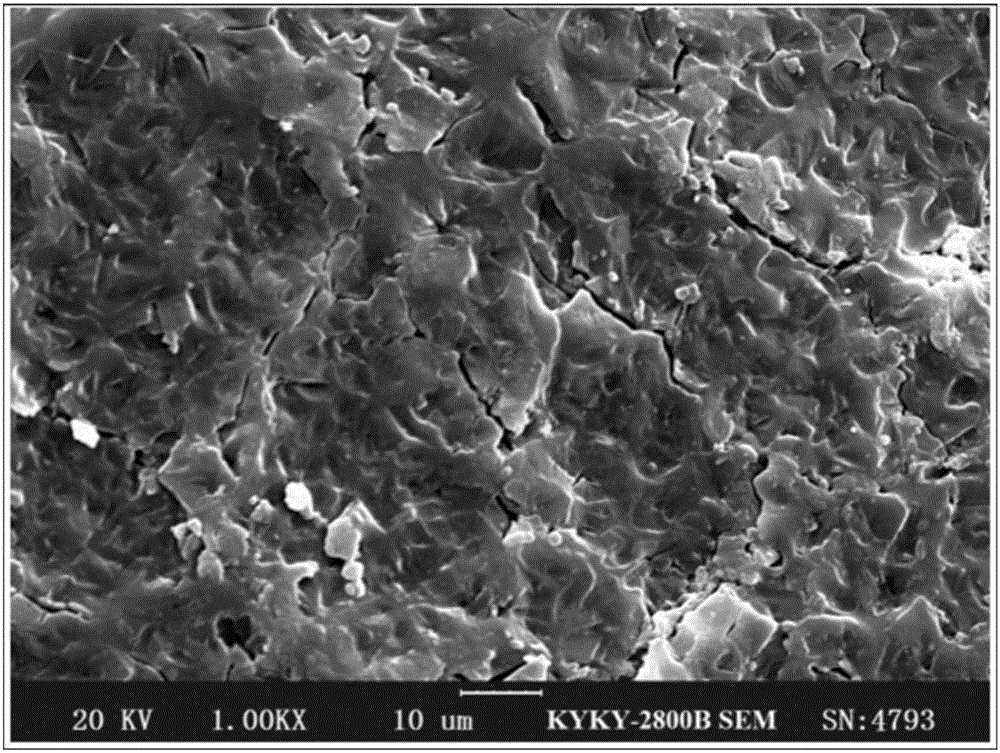Damping vibration attenuation composite material containing nanocrystalline and manufacturing method thereof
A technology of composite materials and nano-crystals, applied in the field of damping and vibration-reducing composite materials containing nano-crystals and its manufacturing, can solve the problems of composite materials losing damping effect, achieve good economic and social value, simple operation, and improve damping performance effect
- Summary
- Abstract
- Description
- Claims
- Application Information
AI Technical Summary
Problems solved by technology
Method used
Image
Examples
Embodiment 1
[0031] The mass percent of each component of the damping and vibration-reduction composite material containing nanocrystals adopts carboxylated nitrile rubber: AO4426:AO2246=54:36:10, and the preparation steps of the composite material are as follows:
[0032] The first step of mixing:
[0033] 1> Raise the temperature of the rollers on the double-roller plastic refining machine to 40°C and keep it basically stable;
[0034] 2>Add the cut carboxylated nitrile rubber into small pieces between the rollers to form a film through the surface temperature of the rollers and the shearing action between the double rollers;
[0035] 3> After weighing the film-forming carboxylated nitrile rubber, AO 4426 and AO 2246 according to the mass ratio of 54:36:10, first mix the carboxylated nitrile rubber film between the double rollers, and then slowly add AO 4426, Use a cutter for auxiliary mixing to make the components evenly mixed; then add AO 2246, also use a cutter for auxiliary mixing t...
Embodiment 2
[0044]Containing the mass percent of each component of the damping and vibration-reduction composite material of nanocrystals adopts the mass percent of each component and adopts carboxylated nitrile rubber: AO 4426:AO 2246=48:32:20, and the steps of the preparation of the composite material are the same as in Example 1 , the process is different from Example 1 in that the temperature is 45° C. and the time is 50 minutes when the raw materials are uniformly mixed on a double-roller extruding machine. The sample was hot-pressed under a flat vulcanizing machine at a temperature of 145°C. The preheating time was 20 minutes without pressure, the hot-pressing time was also 30 minutes, and the pressure was 15.5Mpa. Finally, the material was taken out and cooled in ice water. Thus, a damping and vibration-absorbing composite material B containing nanocrystals with a thickness of 1 mm was prepared, denoted by Composite B.
Embodiment 3
[0046] Containing the mass percent of each component of the damping and damping composite material of nano crystallites adopts the mass percent of each component and adopts carboxylated nitrile rubber: AO 4426:AO 2246=42:28:30, and the steps of the preparation of the composite material are the same as in Example 1 , the process is different from Example 1 in that the temperature is 50° C. and the time is 60 minutes when the raw materials are uniformly mixed on a double-roller extruding machine. The sample was hot-pressed under a flat vulcanizing machine at a temperature of 160°C. The preheating time was 30 minutes without pressure, the hot-pressing time was also 40 minutes, and the pressure was 16Mpa. Finally, the material was taken out and cooled in ice water. Thus, a damping and vibration-absorbing composite material C containing nanocrystals with a thickness of 1 mm was prepared, denoted by Composite C.
[0047] The damping performance of the composite material prepared in ...
PUM
 Login to View More
Login to View More Abstract
Description
Claims
Application Information
 Login to View More
Login to View More - R&D
- Intellectual Property
- Life Sciences
- Materials
- Tech Scout
- Unparalleled Data Quality
- Higher Quality Content
- 60% Fewer Hallucinations
Browse by: Latest US Patents, China's latest patents, Technical Efficacy Thesaurus, Application Domain, Technology Topic, Popular Technical Reports.
© 2025 PatSnap. All rights reserved.Legal|Privacy policy|Modern Slavery Act Transparency Statement|Sitemap|About US| Contact US: help@patsnap.com



